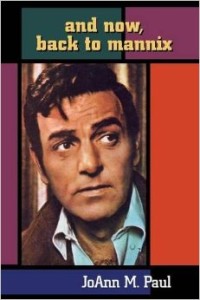TV detective dramas may seem like they’re a dime a dozen, but the truly well-made ones can be counted on the fingers of one hand. The television series “Mannix,” starring Mike Connors—which ran for eight years on CBS in the 1960s and 1970s —may not only be among the best of these crime shows, but it may sit at the very top of the list.
 So argues JoAnn Paul, Associate Professor of Electrical & Computer Engineering at Virginia Tech.
So argues JoAnn Paul, Associate Professor of Electrical & Computer Engineering at Virginia Tech.
And she may well be right.
Produced between 1967 and 1975 at Paramount Studios, “Mannix” followed the adventures of Los Angeles-based private eye Joe Mannix—a tough, no-nonsense detective with a heart who was assisted in his work by his dedicated secretary, Peggy, played by Gail Fisher.
The series was one of the first network shows to feature an African-American—Fisher—as a lead performer, and to present stories that occasionally dealt with issues of race. Her performance in the series was also notable for the Emmy award it earned her—giving her the distinction of the being the first black female to ever be so honored.
“Mannix” is also notable in that it was the last creation of the legendary Desilu Studios (Lucille Ball and Desi Arnaz). In fact, the series enjoyed a longer network run than two other high-profile Desilu shows, “Star Trek” and “Mission: Impossible.” Both “Mission” and “Mannix” were produced by Emmy winner Bruce Geller.
Paul’s new book, And Now, Back to Mannix, delves into the popular series in a highly unusual way. Unlike typical TV show books, this one doesn’t take the ho-hum, cookie-cutter approach that merely offers episode titles, story synopses and cast credits.
Instead, And Now, Back to Mannix uses the TV series to reflect on changes in our culture and in our heroes. Combining her extensive knowledge of the show with intensive research into the writings of Joseph Campbell and Carl Jung, the author has produced a thoughtful work that provides deep insights into the importance of storied heroic myth in our lives.
The character’s toughness and determination to overcome obstacles—and his resilience in bouncing back from the physical harm that he endures in the course of his work—resonated with Paul.
“I endured quite a few difficult things in my life,” she says, “and the character of Joe Mannix—my love for that character—has helped me survive those things.”
The author expands on that in her book, illustrating through “Mannix” “why story and heroes are unique in their ability to help us be better people and do more with our lives.” In the process, Paul shows how the classic show proves to be exceedingly relevant in today’s world and how changes in our storied characters may be affecting us more than we realize.
The foreword to the book was written by “Mannix” star Mike Connors himself. The actor provided Paul with his own unique insight into the series, gave the finished manuscript his wholehearted seal of approval, and agreed to write the foreword. “It is a very interesting book,” he says, “[with] a completely different slant from the average book written about a TV series. [JoAnn] goes into it psychologically very deeply.”
During her book-writing journey, Paul found a kindred spirit in David Breckman, writer/producer of the hit TV series “Monk,” who enthusiastically signed on to write the book’s prologue. “JoAnn makes her insights personal,” wrote Breckman, “to illustrate how Mannix’s virtues of bravery, nobility, dignity, and good old-fashioned American toughness are as relevant to our own time, and our own lives, as ever before.”
And Now, Back to Mannix is published by BearManor Media, whose catalog includes nearly 700 titles, many related to the medium of television.
